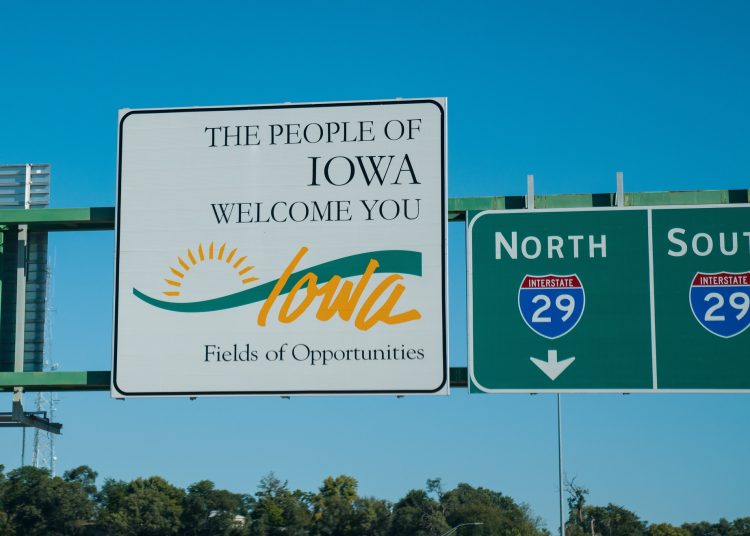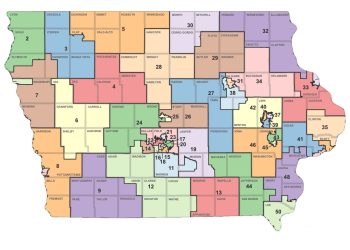(The Center Square) – Retail sales tax collection in Iowa dropped from Fiscal Year 2019 to 2020 for the first time in at least five years.
The COVID-19 pandemic dealt the second quarter of 2020 a .23 percent loss ($4.9 million) in sales taxes, according to a report released Tuesday from the Iowa Department of Revenue.
Polk County brought in the most retail tax for the state with $518.75 million, or 21.69 percent, of the retail tax, in Fiscal Year 2020, and about $122 million of that total came in during the second quarter. Des Moines brought in $55.12 million during the same quarter, followed by Cedar Rapids ($45.09 million) and Davenport ($30.87 million).
In terms of taxes lost, the business group that suffered the steepest decline – 15.35% – from Fiscal Year 2019 to Fiscal Year 2020 was apparel; followed by eating and drinking, which decreased 6.4 percent between the quarters; and services, with a decrease of 6.08 percent. The second quarter of 2020 brought in 44.93 percent less in taxes for apparel compared with the second quarter of 2019. Taxes brought in by building materials, specialty retail and food dealers increased the highest percentage between those two quarters. Building materials also had the highest growth – 9.61% – between the fiscal years.
Consumers’ use taxes decreased 6.72 percent, with no growth in any categories, which were based on amount of tax due. The most significant drops were in purchases that owed taxes of $50,000-99,999 (16 percent decrease); $100-149 (15.83 percent decrease); and $1,500-$1,999 (14.61 percent decrease). Purchases that owed $3,000-$3,999 or $25,000-$49,999 experienced the least decreases: .7 percent and .98 percent respectively.
However, retailers’ use tax increased 10.96 percent, which benefited from growth in the categories of purchases that owed $100,000 or more in taxes (which brought in $364.9 million) and $10,000-$24,999 in taxes (bringing in $50.62 million).
Remote sellers tax nearly quadrupled, rising 283.91 percent between the fiscal years. The 19,475 returns from remote sellers amounted to $100 million. Nearly a third of remote seller returns were from sales that generated less than $50 per return. The highest growth in tax from the previous fiscal year (328.37 percent) was from 93 purchases that brought in $52.92 million in computed tax.
In the third quarter of 2020, Iowa’s real gross domestic product grew 36.4% from the second quarter, which had taken a 28.2 percent hit from the first quarter, according to a Bureau of Economic Analysis report. The durable goods (includes motor vehicles, household equipment and recreational vehicles) manufacturing (6.77 percent); health care and social assistance (4.07 percent); nondurable goods manufacturing, which includes clothing, gasoline and food and beverages for off-premises consumption (3.45 percent); government and government enterprises (2.99 percent); and accommodation and food services (2.85 percent) industries experienced the largest increased contributions to the GDP while management of companies and enterprises (.15 percent), utilities (.03 percent) and mining, quarrying and oil and gas extraction (-.01 percent) had the least gains.
The United States overall in the fourth quarter of 2020 saw personal consumption expenditures decrease .10 percent for nondurable goods, no change for durable goods, and a 1.33 percent increase for personal health care, according to the Bureau’s preliminary report.
According to the latest data from Iowa Workforce Development, there were 5,938 initial unemployment insurance claims and 46,708 continued weeks claimed in the last week of January 2021. The counties that had the highest numbers of initial unemployment claims that week were Polk County (979 claims), Linn County (435 claims), and Scott County (306 claims). Workers in the construction industry filed the most initial claims that week in both counties, as well as statewide figures. Iowa unemployment was a record-high 11 percent in April 2020. In December 2020, it was 3.1 percent.















